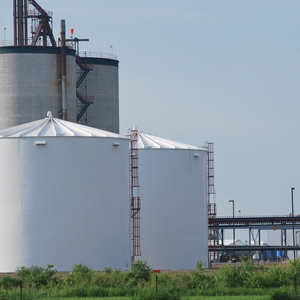4 ethanol plants added to EPA efficient producer list

October 8, 2015
BY Susanne Retka Schill
Four more corn ethanol plants have been named efficient ethanol producers by the U.S. EPA. Three are Valero Renewable Fuels plants located at Bloomingburg, Ohio, Albion, Nebraska, and Linden, Indiana, all 120 MMgy facilities. The fourth producer named was Carbon Green Bioenergy LLC, a 50 MMgy plant at Lake Odessa, Michigan.
The total number of corn ethanol plants achieving efficient producer status is now 45, plus one proposed corn ethanol plant. Valero now has seven of its 11 ethanol plants on the list. The plant in Albert City, Iowa, was named to the list one month earlier.
The efficient producer status allows these ethanol producers to generate renewable identification numbers (RINs) for ethanol production above the volume grandfathered in when the revised renewable fuels standard (RFS) was passed in 2007.
Advertisement
Table 2 in the notification letters posted to the EPA’s website summarizes the plants’ lifecycle greenhouse gas (GHG) emissions, calculated by using the individual plants’ corn consumption, natural gas and electrical use and ethanol production. Carbon Green’s lifecycle shows a 20.8 percent reduction in GHG emissions compared to the baseline gasoline. Valero’s Bloomingburg plant has a 25.0 percent reduction, Albion, 23.4 percent and Linden, 21.1 percent reduction. That compares with the industry average of 16.8 percent reduction for plants grandfathered in that was calculated by the agency when it first published the RFS rule in 2010. Any new plants or expanded production volumes must meet a minimum 20 percent GHG reduction when compared to the baseline. The EPA formula used to calculate GHG reduction includes estimated GHG emissions due to indirect land use change.
While efficient producers can expand production beyond the volume grandfathered in, they must document ongoing GHG reductions by collecting data on a daily basis that is used to calculate a rolling daily average GHG value using an EPA spreadsheet.
Advertisement
Related Stories
Keolis Commuter Services, the Massachusetts Bay Transportation Authority’s operations and maintenance partner for the Commuter Rail, has launched an alternative fuel pilot utilizing renewable diesel for some locomotives.
Virgin Australia and Boeing on May 22 released a report by Pollination on the challenges and opportunities of an International Book and Claim system for sustainable aviation fuel (SAF) accounting.
The biodiesel industry has been facing turbulence, but the release of long-overdue policy could course-correct.
The U.S. House of Representatives early on May 22 narrowly passed a reconciliation bill that includes provisions updating and extending the 45Z clean fuel production tax credit. The bill, H.R. 1, will now be considered by the U.S. Senate.
U.S. EPA Administrator Lee Zeldin on May 21 stressed the agency is working “as fast as humanly possible” to finalize a rulemaking setting 2026 RFS RVOs during a hearing held by the U.S. Senate Committee on Environment and Public Works.
Upcoming Events










